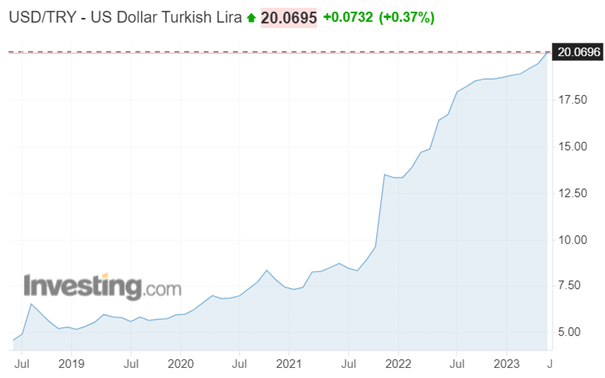The article on Reuters said, that President Tayyip Erdogan has secured victory in the elections, extending his two-decade-long rule, and reaffirming his increasingly authoritarian policies. While his challenger, Kemal Kilicdaroglu, acknowledged the outcome, he criticized the election as unfair. The official results revealed a deeply divided nation, with Erdogan winning 52.1% of the votes compared to Kilicdaroglu's 47.9%. The election, considered crucial for Turkey, was seen as an opportunity for the opposition to unseat Erdogan and reverse his policies, but his victory further solidified his power and image. Erdogan's leadership has faced accusations of undermining democracy, though he denies them. The international community, including Turkey's NATO allies, will likely watch Erdogan's extended rule with concern due to his ties with Russian President Vladimir Putin.
What I read from the article, it quickly gave me an idea that this does not mean anything good for their economy and Turkish lira, their currency. I went to open the chart of forex pair USD TRY and once again, my prediction was right.
The outcome of election pushed the chart higher, to a historical maximum of 20,07 TRY for 1 USD. While for me, a potential traveller to the country, this means very good news, as I will be able to afford more with the same amount of money, it doesn’t mean anything good for the people living there. In fact, TRY is quickly losing its value. In June 2018, for example, the exchange rate was 1 to 4,65. So in only 5 years’ time, the value fell to 1 to 20,07 – a value of TRY at the time of writing. * Based on the movement of the chart I figured that this trade is a no brainer, if nothing will change in the country. I decided to keep an eye on this pair and open a position for long soon.

Movement of forex pair USDTRY in the last five years. (Source: Investing) *
* Past performance is no guarantee of future results.








